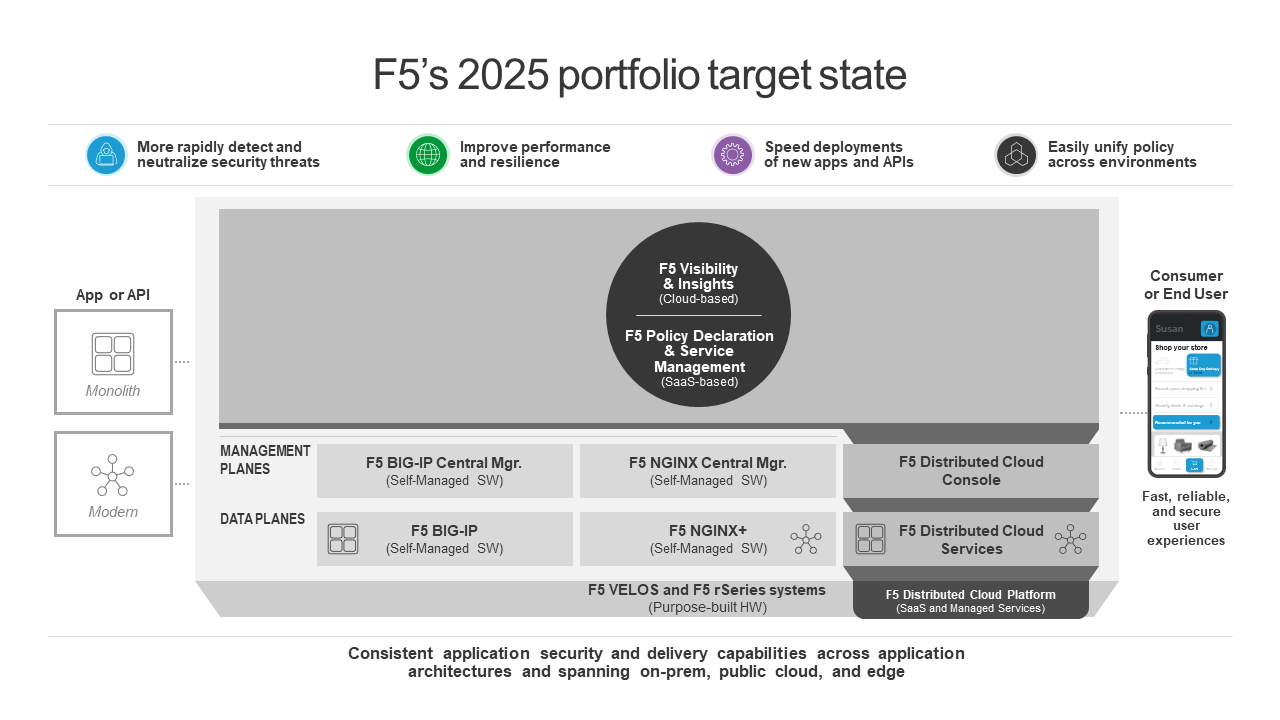Sichern, vereinfachen, innovieren: Einen Weg zu adaptiven Apps planen
Sicher. Vereinfachen. Innovativ sein . Drei einfache Worte, die die digitale Notwendigkeit jeder Organisation beschreiben.
Zwei Jahre nach Beginn der Pandemie ist klar, dass wir hinsichtlich der Geschwindigkeit der digitalen Einführung und Transformation einen neuen Höchststand erreicht haben. Organisationen aller Art, Größe und Standorte betrachten Innovationen im Kunden- und Mitarbeitererlebnis zunehmend als überlebensnotwendig. Sie übernehmen neue Geschäftsmodelle, Prozesse und Technologien, um den heutigen Konsummustern besser gerecht zu werden und eine sicherere Bereitstellung von Waren und Dienstleistungen zu ermöglichen.
Diese digitale Beschleunigung unterstreicht die Chancen und Herausforderungen, mit denen jede Organisation konfrontiert ist. Unternehmensleiter treffen Strategie- und Planungsentscheidungen, um das Kundenerlebnis zu verbessern, das Geschäft umzugestalten und sich durch ihre Anwendungsportfolios von der Konkurrenz abzuheben. Gleichzeitig haben IT-Betreiber mit immer größeren Sicherheitsbedrohungen, veralteten Anwendungen und Infrastrukturen, die noch immer die geschäftskritischsten Aktivitäten unterstützen, und einer erdrückenden Komplexität zu kämpfen.
Wie können Sie dieses Minenfeld an Herausforderungen erfolgreich meistern und in der digitalen Zukunft erfolgreich sein? Um zu überleben und ihre Relevanz zu wahren, müssen Unternehmen bei der Erreichung dieser drei miteinander verbundenen Ziele kontinuierlich Fortschritte erzielen:
- Sicher: Ob Angriffe auf die Software-Lieferkette, grassierende Ransomware-Angriffe, ungepatchte CVEs oder in Ihren Apps versteckte Log4j- Schwachstellen – Sicherheitsbedrohungen lauern überall. Und die Sicherung Ihrer wichtigsten Vermögenswerte – Ihrer Anwendungen – wird in Hybrid-, Multi-Cloud- oder verteilten Cloud-Umgebungen immer schwieriger. Organisationen müssen mit robusten Anwendungs- und API-Sicherheitsfunktionen ausgestattet werden, die sich über lokale, öffentliche Cloud- und Edge-Umgebungen erstrecken und gleichzeitig die Verwaltung und Durchsetzung konsistenter Sicherheitsrichtlinien über komplexe Bereitstellungen hinweg ermöglichen.
- Vereinfachen: Bruce Schneier brachte es 1999 am besten auf den Punkt, als er sagte: „Komplexität ist der schlimmste Feind der Sicherheit.“ Heutzutage müssen sich Unternehmen nicht nur um die Infrastruktur vor Ort kümmern. Jetzt verfügen sie über mehrere Clouds, Edge-Umgebungen sowie Unternehmens- und Privatgeräte, die Zugriff auf vertrauliche Daten erfordern – und eine wachsende Mischung aus Anwendungsarchitekturen, die von monolithisch über Microservices bis hin zu mobil und allem dazwischen reicht. Der Schlüssel zur Beherrschung dieser Komplexität liegt in der Standardisierung von Cloud-agnostischen Anwendungssicherheits- und Bereitstellungslösungen, dem Betrieb einer Cloud-agnostischen Infrastruktur (wo möglich) sowie der Konsolidierung und Vereinfachung Ihres Lösungsportfolios.
- Innovation: Ebenso wie Sicherheit ist Innovation eine Grundvoraussetzung für das Überleben, doch in Zeiten der digitalen Beschleunigung reichen sie nicht aus, um erfolgreich zu sein. Und ebenso wie die Sicherheit ist auch die Komplexität ein schrecklicher Feind der Innovation. Komplexität raubt den Entwicklern Zeit und Konzentration und erhöht die Betriebskosten und Risiken. Das Playbook von F5 für sichere Innovationen im großen Maßstab stellt Best Practices führender Innovatoren dar und stärkt Entwickler durch die Festlegung von vier Prinzipien: Sicherheit nach links verschieben, Open Source nutzen, Infrastruktur als Code behandeln und durch Self-Service automatisieren.
Um unseren Kunden beim Erreichen dieser Ziele zu helfen, hat F5 seine Vision für adaptive Anwendungen geschärft. Nachdem wir ein Jahr lang Kundenfeedback gesammelt haben, haben wir ein konkreteres Wertversprechen entwickelt, das wir unbedingt einhalten wollen, sowie einen Plan mit Meilensteinen, auf die sich unsere Kunden auf dem Weg zu dieser Vision freuen können.
Das Warum adaptiver Apps
Beginnen wir mit dem Warum : Warum sollten Unternehmen an der Realisierung dieser Vision adaptiver Apps interessiert sein? Adaptive Apps mildern kritische geschäftliche Herausforderungen, indem sie Vorteile bieten, die auf die wichtigsten Prioritäten unserer Kunden abgestimmt sind:
1. Sicherheitsbedrohungen schneller erkennen und neutralisieren. Kunden können die Zeit zum Erkennen und Beheben von Bedrohungen minimieren, indem sie sich ein umfassendes Bild von der Sicherheitslage ihres Anwendungsbestands machen und auf ML-Techniken basierende Echtzeitanalysen hinsichtlich der sich entwickelnden Bedrohungslandschaft durchführen. Noch besser: Kunden können die Bedrohungen mithilfe geführter Korrekturmaßnahmen oder sogar automatischer Schadensbegrenzung auf Grundlage erweiterter Analyse- und Automatisierungs-Toolchains schnell selbst beseitigen.
2. Verbessern Sie die Anwendungsleistung und Ausfallsicherheit. Kunden können richtliniengesteuerte Aktionen ausführen, die Leistungseinbußen und Anwendungsausfälle verhindern, indem sie umfassende Anwendungstelemetrie nutzen und die Daten über einen bestimmten Zeitraum und für Peer-Anwendungen analysieren. Darüber hinaus können Kunden die Anzahl kritischer Vorfälle reduzieren und ihre Reaktionszeit bei kritischen Vorfällen verbessern, indem sie schnelle und fundierte Anpassungen an der Infrastruktur vornehmen und dabei robuste Tools zur Fehlerbehebung, Erkenntnisse aus dem Anwendungsverhalten und eine effektive Automatisierung nutzen.
3. Beschleunigen Sie die Bereitstellung neuer Apps. Kunden können Kosten senken und Anwendungen schneller bereitstellen und warten, indem sie Automatisierung mit Erkenntnissen und erweiterten Bereitstellungstechniken kombinieren, wie etwa dynamischen, verhaltensbasierten WAF-Regeln und A/B-Tests von Bereitstellungskonfigurationen.
4. Vereinheitlichen Sie Richtlinien problemlos für alle Umgebungen vor Ort, in der öffentlichen Cloud und in Edge-Umgebungen. Kunden können die Richtlinienerklärung und -durchsetzung vereinheitlichen, indem sie Anwendungssicherheits- und Bereitstellungsrichtlinien über eine einzige Verwaltungskonsole definieren und verwalten. Darüber hinaus können sie integrierte Automatisierungsfunktionen nutzen, um diese Richtlinien für ältere und moderne Apps durchzusetzen, die sich über lokale, öffentliche Cloud- und Edge-Umgebungen erstrecken. Dies ermöglicht es Kunden letztendlich, die Kosten und Komplexität des Betriebs von Apps in unterschiedlichen Anwendungsumgebungen zu reduzieren.
Im Einklang mit diesen Vorteilen besteht die Vision von F5 für 2025 darin, es unseren Kunden zu ermöglichen, manuell behandelte Bedrohungen zu reduzieren, die Leistung und Ausfallsicherheit von Anwendungen zu verbessern, die Zeit für die Bereitstellung neuer Apps zu verkürzen und die Kosten für die Implementierung von App-Sicherheits- und Bereitstellungsrichtlinien vor Ort, in der öffentlichen Cloud und am Edge um Größenordnungen zu senken, und zwar für alle modernen und älteren Anwendungen.
Das Was adaptiver Apps
Nachdem Sie nun das Warum kennen, ist es einfacher, das Was zu verstehen. Zusammenfassend lässt sich sagen, dass adaptive Anwendungen Intelligenz und Echtzeitänderungen in die Anwendungsbereitstellung bringen, die heute meist statisch und manuell erfolgt. Adaptive Apps nutzen einen architektonischen Ansatz, der schnelle und vollautomatische Reaktionen auf wichtige Variablen ermöglicht – beispielsweise neue Cyberangriffe, Aktualisierungen der Sicherheitslage, Verschlechterungen der Anwendungsleistung oder sich schnell ändernde Bedingungen in einer oder mehreren Infrastrukturumgebungen. Diese Apps werden durch die Erfassung und Analyse von Live-Anwendungs- und Sicherheitstelemetrie, die Orchestrierung dynamischer Service-Management-Richtlinien und robuster Automatisierungs-Toolchains ermöglicht.
Lassen Sie es mich klarstellen: Um den vollen Wert adaptiver Anwendungen auszuschöpfen, reicht es nicht aus, Apps einfach in der öffentlichen Cloud auszuführen oder neue Apps in einer containernativen Microservices-Architektur zu entwickeln. Gleichzeitig muss eine Anwendung nicht auf einer modernen Architektur basieren, um adaptiv zu sein; Sie können auch Legacy-Anwendungen ohne Refactoring adaptiver gestalten.
Nehmen wir zum Beispiel ein großes Finanzdienstleistungsunternehmen, dessen Online-Banking-App kürzlich ausgefallen war. Als einer der beliebtesten integrierten Kundendienste ausfiel, überprüften besorgte Endbenutzer sofort ihre Online-Konten. Der Ansturm auf die Online-App führte zu Nachfragespitzen, die von der instabilen Anwendungsbereitstellungsarchitektur nicht bewältigt werden konnten, die ausschließlich auf Hardwarelösungen basierte, die bereits bedenklich an der Kapazitätsgrenze liefen. Eine robustere, anpassungsfähigere Architektur erweitert moderne Hardware mit Scale-Out-Software und isoliert Fehlerdomänen mit einem Pro-App-Modell für Anwendungssicherheit und -bereitstellung.
Das Wie adaptiver Apps
Bei der Bereitstellung der oben beschriebenen Vorteile fangen wir nicht bei Null an. Heute verfügen wir über zahlreiche Fallstudien und Referenzen von Kunden, die belegen, dass wir in jedem dieser Nutzenbereiche bereits einen echten Mehrwert für unsere Kunden schaffen. Und für die Zukunft haben wir einen Fahrplan mit Meilensteinen für den Kundenwert erstellt, um auf dem Weg zu unserem Ziel für 2025 einen höheren ROI zu erzielen. Diese Meilensteine des Kundenwerts leiten unsere Produktinvestitionen und Roadmap-Entscheidungen im gesamten F5-Portfolio.
Um ein Beispiel zu nennen: Viele F5-Kunden nutzen bereits unsere Lösungen, um manuell gehandhabte Bedrohungen zu reduzieren und guten und schlechten Anwendungsverkehr zu identifizieren und jeder App eine leistungsstarke signaturbasierte WAF beizufügen. In den Jahren 2022, 2023 und 2024 können Kunden mit erweiterten Funktionen rechnen, die es ihnen ermöglichen, mehr bösartige Angriffe zu erkennen und zu stoppen sowie Umgebungen mit einem höheren Grad an Automatisierung zu sanieren, während gleichzeitig detaillierte Sicherheitskontrollen auf ihre Microservices und APIs ausgeweitet werden. Ebenso verfügen wir über konkrete Belege und einen Fahrplan mit Meilensteinen zur Steigerung des Kundennutzens für jeden der vier oben beschriebenen Vorteile adaptiver Apps.
Unsere Kunden sowie Investoren, Analysten und andere haben uns in den letzten drei Jahren dabei beobachtet, wie wir Unternehmen wie NGINX, Shape, Volterra und Threat Stack übernommen haben. Aus meiner Zeit mit unseren Stakeholdern weiß ich, dass sie sehr neugierig sind, wie wir diese Assets mit BIG-IP zusammenführen, um Kunden dabei zu helfen, ihre angestrebten Geschäftsergebnisse zu erreichen. Daher bin ich stolz, ihnen mitteilen zu können, wie wir genau das erreichen wollen, indem wir den Tech-Stack von F5 für adaptive Apps und den Zielzustand unseres Portfolios für 2025 vorstellen.
Wir arbeiten hart an der Umsetzung unserer Portfolio-Roadmap, um dieses Ziel zu erreichen. Dazu gehören:
- Aufbau eines erstklassigen Portfolios an SaaS-Angeboten für Anwendungssicherheit und -bereitstellung, bereitgestellt auf einer gemeinsamen Plattform für SaaS und Managed Services. Wir machen es einfacher, Sicherheit in jede Anwendung zu integrieren.
- Verwenden Sie Telemetrie und Analysen, um umsetzbare Erkenntnisse zu gewinnen und eine geschlossene Automatisierung voranzutreiben. Unser Ansatz bietet Kunden mehrere Ebenen der Telemetrieaggregation und -analyse sowie die Flexibilität, die Verwaltungs-, Analyse- und Sichtbarkeitstools von F5 zu nutzen oder ihre eigenen zu verwenden.
- Vereinfachung der Automatisierung und Ökosystemintegration durch gemeinsame APIs, die über Produktfamilien und Stack-Ebenen hinweg genutzt werden und zudem versioniert und deklarativ sind.
- Wir vereinheitlichen unsere Produktfamilien, um die Komplexität zu verringern und ein nahtloseres Kundenerlebnis zu bieten, einschließlich Kauferlebnis, Produkttelemetriestandards, einer einzigen Cloud-basierten Datenpipeline und Analyse-Engine, einer gemeinsamen SaaS-Funktion für Richtlinienerklärung und Servicemanagement sowie gemeinsamen UI-Komponenten und -Design.
Beginnen Sie Ihre Reise zu adaptiven Apps
Wir sind uns bewusst, dass die Welt der adaptiven Anwendungen nicht über Nacht entstehen wird. Aber es ist auch keine Welt, die in einer fernen, unerreichbaren Zukunft liegt. Wie die Kunden, die wir kürzlich bei Agility 2022 hervorgehoben haben, ist die Erschließung der Leistungsfähigkeit adaptiver Anwendungen ein Prozess, den jedes Unternehmen heute beginnen kann.
F5 holt Sie dort ab, wo Sie sind. Sie wählen Ihren Startpunkt. Ob es darum geht, die Sicherheit und Bereitstellung Ihrer Legacy-Apps zu vereinfachen, Apps und APIs überall zu sichern oder moderne Apps im großen Maßstab zu ermöglichen: Gemeinsam verändern wir die Art und Weise, wie wir sichern, vereinfachen und innovieren, um letztlich eine bessere digitale Welt zu erschaffen.
Von Kara Sprague, Executive Vice President und General Manager, App Delivery und Enterprise Product Ops

